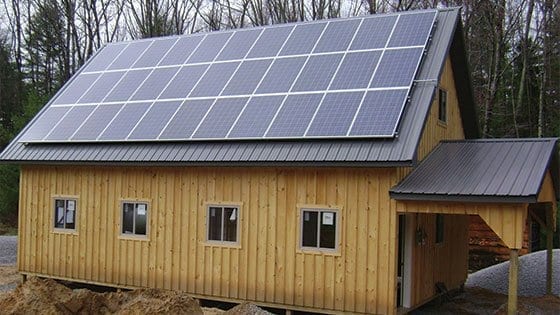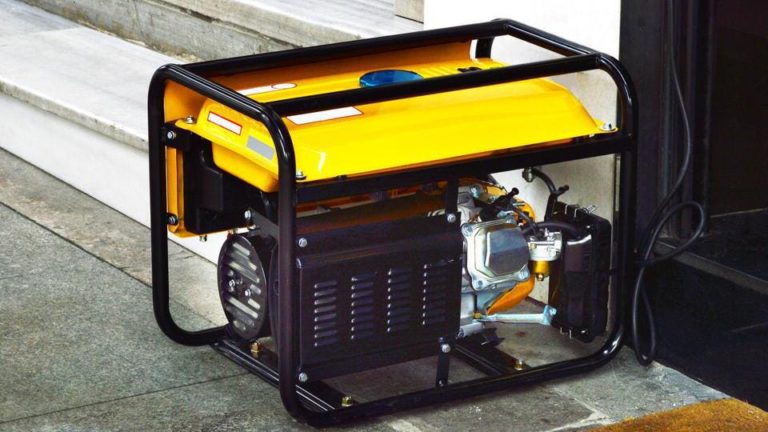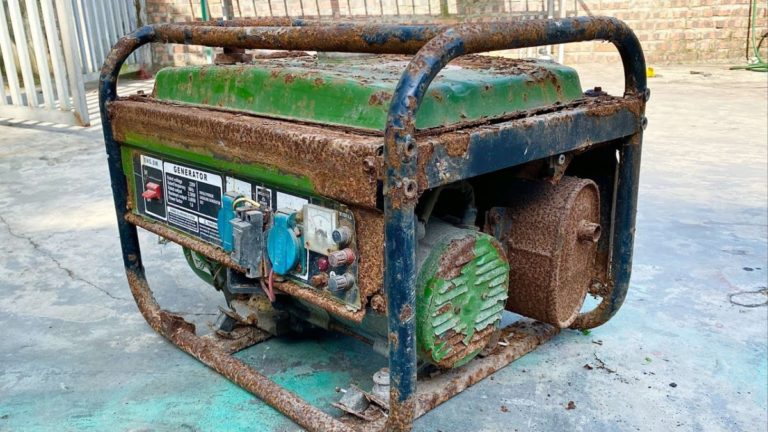Transitioning to off-grid living is a dream shared by many environmentally conscious individuals.
Harnessing solar power, paired with innovative inverter technology, can provide an affordable means to escape the confines of traditional energy grids and rely on clean renewable sources instead.
But just how much does such a system cost?
In this analysis, we’ll break down the pricing aspects of off-grid living with solar panels and inverters so that you can confidently embark on your journey towards sustainability and savings.
Determine your energy needs
The first step is to determine your energy needs, including the amount of power you need to run your appliances and lighting. This will help you determine the size and number of solar panels and inverters you need.
This includes assessing the wattage of each appliance and the number of hours you use them per day.
For example, if you have a refrigerator that uses 200 watts and you use it for 24 hours per day, you’ll need a solar power system that can provide at least 200 watts x 24 hours = 4,800 watt-hours (Wh) per day.
You’ll need to consider the energy requirements of any other appliances and lighting you want to power with your solar system, such as televisions, air conditioners, and lights.
Once you have a good understanding of your energy needs, you can determine the size and number of solar panels and inverters you need to meet those needs.
Choose the right equipment
Choose high-quality solar panels and inverters that are suitable for your energy needs and budget. Consider the warranty, durability, and maintenance requirements of the equipment.
When it comes to choosing the right equipment for your solar panel system, it’s important to select high-quality solar panels and inverters that meet your energy needs and fit within your budget.
Look for solar panels that have a strong warranty and are durable enough to withstand harsh weather conditions.
Consider the maintenance requirements of the equipment, as well as the manufacturer’s reputation for providing reliable and efficient products.
High-quality solar panels should have a high efficiency rating, meaning they can convert more sunlight into electricity.
Look for panels with a high photovoltaic (PV) rating, and choose ones that are built to last, such as those with a sturdy frame and durable glass or plastic covering.
Inverters are also important components of a solar panel system, as they convert the DC power produced by the solar panels into AC power that can be used in your home or sold back to the grid.
Look for inverters with a high power rating and efficient conversion technology, such as those with a high peak efficiency rating.
When evaluating the warranty, consider the duration and scope of coverage, as well as the manufacturer’s reputation for honoring their warranties.
A longer warranty can provide peace of mind and protect your investment in the system.
Consider the maintenance requirements of the equipment, as well as the cost of any expected repairs or replacements.
Choosing the right equipment for your solar panel system requires careful consideration of several factors, including warranty, durability, and maintenance requirements.
By selecting high-quality solar panels and inverters that meet your energy needs and fit within your budget, you can ensure a reliable and efficient system that provides long-term benefits for your home or business.
Assess your location
Consider the amount of sunlight your location receives and the amount of shading your solar panels may experience. This will help you determine the number and size of solar panels you need.
When assessing your location for solar panel installation, it is important to consider the amount of sunlight your location receives and the amount of shading your solar panels may experience.
This will help you determine the number and size of solar panels you need to maximize your energy production.
The amount of sunlight your location receives is a critical factor, as solar panels rely on direct sunlight to generate electricity.
If your location receives a high amount of sunlight throughout the day, you may need fewer solar panels to meet your energy needs.
However, if your location receives limited sunlight due to clouds, trees, or other obstructions, you may need more solar panels to compensate for the reduced sunlight.
Moreover, assessing the amount of shading your solar panels may experience is also essential.
Shading can significantly reduce the efficiency of your solar panels, so it is important to ensure that your panels receive direct sunlight for the majority of the day.
If your location receives a lot of shading, you may need to adjust the angle and orientation of your solar panels to maximize their exposure to sunlight.
Assessing your location’s sunlight and shading is a critical step in determining the number and size of solar panels you need.
By considering these factors, you can optimize your solar panel installation and ensure you meet your energy needs effectively.
Calculate your solar panel requirements
Use a solar panel calculator to determine the number and size of solar panels you need based on your energy needs, location, and amount of sunlight.
To determine the number and size of solar panels you need, you’ll first need to calculate your energy requirements.
This involves assessing your energy usage patterns and identifying the specific electrical appliances and devices that you want to power with your solar system.
Next, you’ll need to consider your location and the amount of sunlight your site receives.
This will help you determine the appropriate size and number of solar panels you’ll need to meet your energy needs.
You can use a solar panel calculator to guide you through this process and provide a detailed assessment of your solar panel requirements.
By taking these factors into account and using a solar panel calculator, you’ll be able to determine the ideal solar panel configuration for your specific needs and location.
Determine your battery bank needs
If you plan to store energy in batteries, determine the size and type of batteries you need based on your energy needs and the amount of time you want to be able to power your home without sunlight.
When designing a solar-powered home, it’s essential to determine your battery bank needs to ensure you have enough storage capacity to meet your energy requirements.
Start by assessing your energy needs, including the appliances and devices you want to power, as well as the amount of time you want to be able to power your home without sunlight.
This will help you determine the size and type of batteries you need.
For example, if you have a small home with basic appliances, a smaller battery bank may be sufficient, while a larger home with more extensive appliances and devices may require a larger battery bank.
Consider the discharge rate of the batteries, which will affect how long the batteries will last and how often you’ll need to recharge them.
By carefully considering your energy needs and selecting the appropriate battery bank, you can ensure a reliable and sustainable source of power for your solar-powered home.
Consider the cost of backup power sources
If you plan to use backup power sources such as generators or fuel cells, consider the cost of these sources and how they will affect your overall budget.
If you’re considering using backup power sources like generators or fuel cells to ensure a reliable supply of power for your home or business, it’s essential to factor in the cost of these sources and their impact on your overall budget.
Generators and fuel cells can be expensive to purchase and maintain, and they may also require additional infrastructure such as storage tanks or installation costs.
In addition to the initial purchase price, you’ll need to consider ongoing expenses such as fuel costs, maintenance and repair fees, and the cost of any additional infrastructure required to support these backup power sources.
For example, generators require regular fueling and maintenance to keep them running smoothly, which can add up over time.
Fuel cells, on the other hand, may require more expensive fuels such as hydrogen or reformulated gasoline, which can also drive up costs.
By carefully considering the cost of backup power sources and their ongoing expenses, you can ensure that your overall budget is accurate and that you’re not overspending on these critical components of your energy plan.
By factoring in the cost of backup power sources, you can make more informed decisions about the types of power sources to use and prioritize the most effective and efficient solutions for your needs.
When evaluating backup power sources, it is important to assess their cost and determine how they will impact your overall budget.
By carefully considering the cost of these sources and their ongoing expenses, you can ensure a reliable supply of power while also staying within your means.
Evaluate the cost of your system
Once you have determined your energy needs, chosen your equipment, and calculated your solar panel and battery bank needs, evaluate the total cost of your system, including installation and maintenance costs.
Evaluating the cost of your solar-powered home system is a important step before making a final decision.
First, determine the total cost of the equipment, including the solar panels, battery bank, charge controller, and inverter.
Next, factor in the cost of installation, which can vary depending on the complexity of the system and the location of your home.
Consider maintenance costs, which can range from periodic cleaning of the panels to full system overhauls.
It’s essential to account for these costs to ensure that your system runs efficiently and effectively over the long term.
Consider the payback period
Consider the payback period, or the amount of time it will take for your system to pay for itself through savings on your energy bills. If the payback period is long, you may need to consider alternative options or revisit your energy needs and equipment choices.
When evaluating the cost-effectiveness of a solar power system, it’s important to consider the payback period, which is the amount of time it will take for your system to pay for itself through savings on your energy bills.
This period is typically calculated by comparing the upfront cost of the system with the amount of money you can save on your energy bills over time.
The payback period is an important factor to consider because if it’s too long, it may not be a feasible investment.
For example, if the payback period for a solar power system is 10 years, it may not be a good option for you if you don’t plan to stay in your current home for that long.
If the payback period is too long, you may need to consider alternative options or revisit your energy needs and equipment choices to ensure that you’re making the most cost-effective decision for your situation.
Want More? Dive Deeper Here!
Hey there! If you’re the type who loves going down the rabbit hole of information (like we do), you’re in the right spot. We’ve pulled together some cool reads and resources that dive a bit deeper into the stuff we chat about on our site. Whether you’re just killing time or super into the topic, these picks might just be what you’re looking for. Happy reading!






